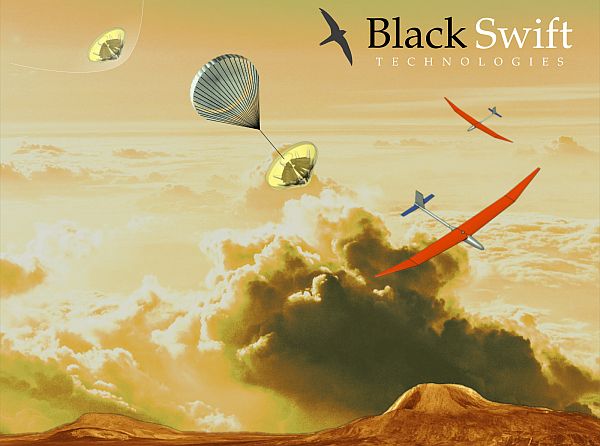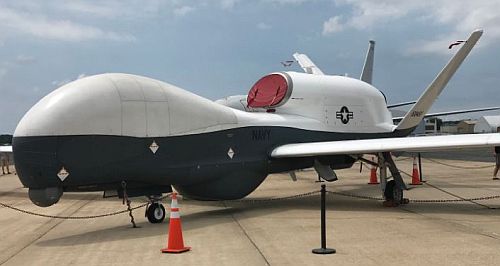Podcast: Play in new window | Download (Duration: 32:55 — 22.7MB)
Facebook cancels the high altitude, solar powered Aquila project. Matternet and DroneDeploy attract VC capital, Amazon patents drone hacking defense, lawmakers seek to make wildfire overflights a felony, China develops surveillance drones that look like birds, and Transcend Air proposes a VTOL transportation service.
UAV News
Facebook’s quest for fleet of solar-powered Internet drones grounded forever
Facebook has shut down their Aquila project. The high altitude, solar-powered drones (or “atmospheric satellites”) were to provide Internet access to areas that lack connectivity. Facebook said other companies with more experience and resources were working on this problem. Two Aquila test flights were conducted – the first resulted in a structural failure that caused a hard landing and the second didn’t meet Facebook’s goals.
Drone Deliveries Advance With $16M Boeing-Led Investment
Matternet has raised $16 million in a Series A funding round led by Boeing Horizon X Ventures. Matternet founder and CEO Andreas Raptopoulos said, “As we expand Matternet’s U.S. and global operations, we will work with Boeing to make next-generation aerial logistics networks a reality and transform our everyday lives.” Investments also came from Swiss Post, the Sony Innovation Fund, and Levitate Capital. Matternet works with Mercedes-Benz Vans in its drone integration program, and it also participates in two projects under the FAA’s UAS Integration Pilot Program.
DroneDeploy Raises $25M of Series C Funding to Bring Drones to Every Job Site
DroneDeploy is the large cloud-based drone data platform with 30,000 users having mapped 30 million acres in 180 countries on 400,000 job sites. The funding round is led by the Invenergy Future Fund and backed by Australian VC AirTree with investors Scale Venture Partners, Uncork Capital, Emergence Capital, and AngelPad.
Amazon eyes defense against hijacking of delivery drones by ‘nefarious individuals’
Yet another Amazon drone patent! Patent number 10007265 is titled “Hostile takeover avoidance of unmanned vehicles” and attempts to counter attackers who would steal the drones or their packages or even to take out the drones by hacking the communications signals. The patent proposes a “heartbeat” signal between the UAV and controller in normal “mission mode.” If the signal is lost, the UAV is assumed compromised and it shifts to “safety mode.” According to the patent, “In the safety mode, the UAV performs one or more pre-programmed actions designed to re-establish communication with the controller, regain control over the UAV in the event of a hostile takeover, and/or land the UAV at a safe location.”
Colorado lawmakers want to make it a felony to fly a drone over a wildfire
U.S. Senator Cory Gardner (R-Colorado), Senator Michael Bennet (D-Colorado), and Rep. Scott Tipton (R-Cortez) introduced S.3132, the Securing Airspace For Emergency Responders Act. Under this bill, flying an unauthorized drone over a wildfire could land you a fine, and maybe a year in jail.
China is testing creepy drones that look and fly like real birds to monitor citizens
China has been testing drones that look and fly like birds. The “robo-doves” have been flown in “at least five provinces by some 30 government and military agencies in the country.” Reportedly, they have gone undetected in these tests by people and other birds. The wings flap, the drones can soar and dive like a bird, and they are very quiet. The perfect surveillance device.
Transcend Air announces “affordable” city-to-city VTOL aircraft
A vertical take-off and landing (VTOL) aircraft providing door-to-door service was announced by Transcend Air Corporation. The tilt-wing Vy 400 six-seat aircraft would utilize VTOL-ready landing pads, 405 miles per hour, and have a range of 450 miles. Transcend plans to launch commuter airline service in early 2024.
It’s Finally Here – Fishing With a Drone: Introducing the RoboRod®
RoboRod LLC has developed a fishing rod with a “drone.” Chief development officer Paul Leslie calls it, “probably the biggest development in the fishing rod since the addition of the reel.” If you can’t cast where you want, RoboRod’s “drone” will swim your line to that perfect spot, and drop your bait on command, to the desired depth.
Video of the Week
Posted by the New York City Drone Film Festival.




